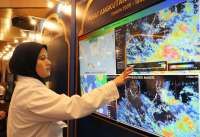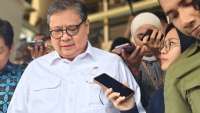JAKARTA. Policymakers of the Association of Southeast Asian Nations (ASEAN) member countries are now able to get updates on any disaster in the region with the establishment of the ASEAN Coordinating Center for Humanitarian Assistance on Disaster Management (AHA Center) in Jakarta.
“AHA Center will gather detailed information from hazard monitoring and disaster warning agencies in all 10 member countries on events such as earthquakes, tsunamis, forest fires, landslides and others. We’ll be able to distribute the information promptly and accurately to the [member] countries,” AHA Center executive director Said Faisal told reporters on Thursday.
Said went on to say that the information would be distributed through emails and text messages, and would only be made available to ASEAN officials and authorities in each member country.
He added that based on the information, the officials would be able to make decisions in response to disasters, including in terms of assistance. “However, the government of the affected country is the only authority that can issue an assistance request,” he said.
In Indonesia, the AHA Center coordinates with various agencies, such as the Meteorology, Climatology and Geophysics Agency (BMKG), National Disaster Mitigation Agency (BNPB) and Assessment and Application of Technology Agency (BPPT).
Said added that the AHA Center monitored the developments closely during Wednesday’s earthquakes
in Aceh.
“We received reports from pivotal agencies or focal points in member countries that also felt the tremors, except the Philippines and Brunei Darussalam. We compiled them, processed them and sent them to all ASEAN members. The Indonesian government did not issue an assistance request because it was able to handle the event,” he added.
According to ASEAN Secretary General Surin Pitsuwan, member countries made an agreement six months after the 2004 earthquakes and tsunami to establish ASEAN’s own disaster information center.
“ASEAN needed infrastructure like this because disaster management had become an important agenda within the association,” he said.
Said explained that each member country was obliged to contribute US$30,000 per year for the Center’s operations. Japan, Australia, New Zealand, the US and the European Union also support the Center.
He said that Japan provided assistance in infrastructure, while the US installed the Disaster Monitoring and Response System with the help of the Pacific Disaster Center (PDC), a nonprofit program under the University of Hawaii.
Ray Shirkhodai, PDC’s executive director, said in Jakarta that the system enabled AHA Center’s operators to analyze and simplify technical data, enhance disaster monitoring capabilities and provide more online data streams.
“AHA Center has access to a lot of information, from infrastructure damage to population figures,” he added.
US Ambassador to ASEAN David Carden said he believed that the Center would benefit ASEAN communities. “The responses that followed the recent earthquakes were quick and all ASEAN members were involved. That’s an example of the Center’s effectiveness,” he said. (tas/TheJakartaPost)
/2012/04/13/110859523p.jpg)









